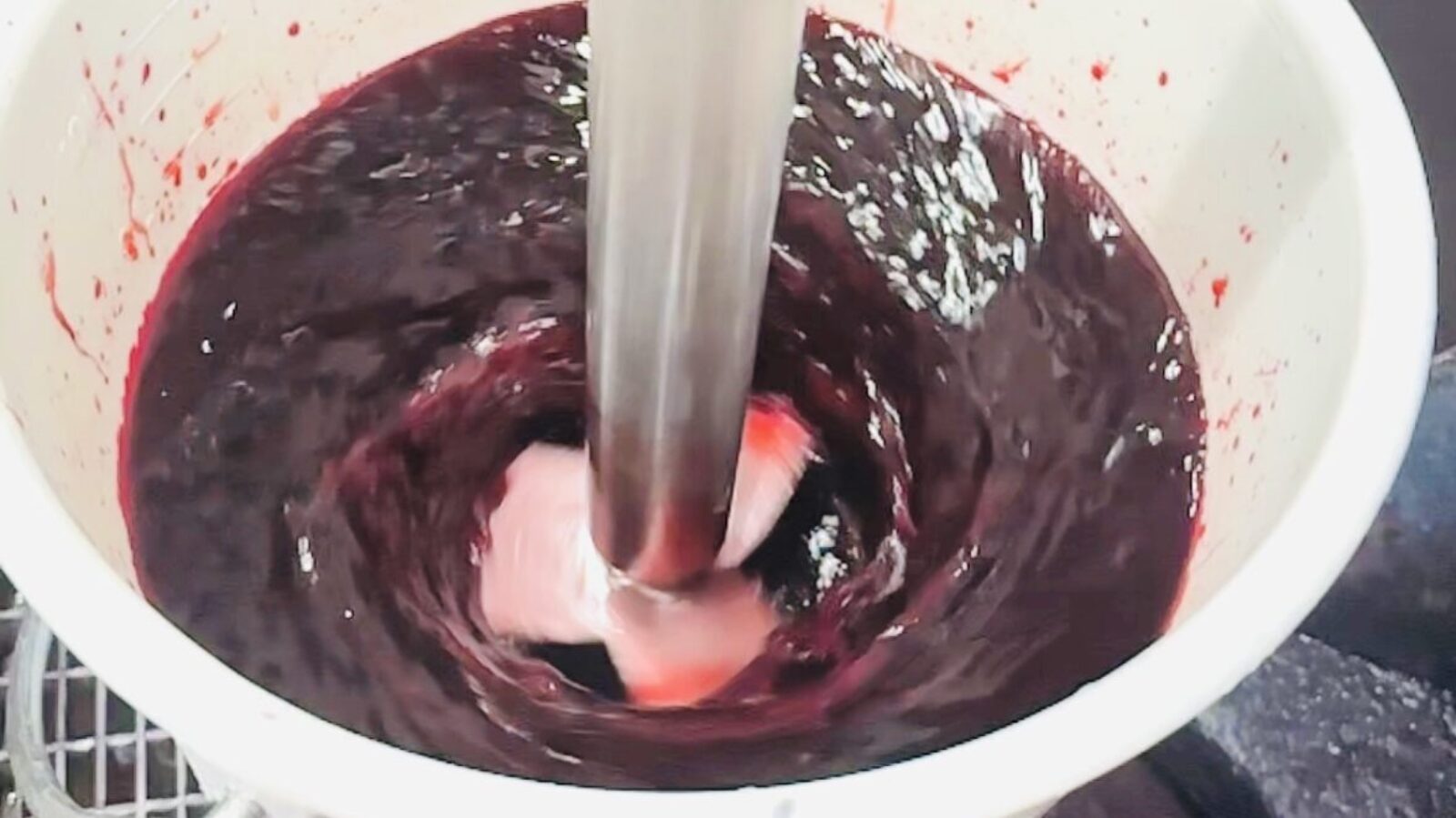Reel Series
Passionate about dyeing: a visit to E. Schellenberg Textildruck AG

We visited a rural residential district at Fehraltdorf in the Canton of Zurich. Here E. Schellenberg Textildruck AG dyes, prints and finishes fabrics for its corporate customers. Swiss Textiles looked behind the scenes and spoke to owner Urs Schellenberg about challenging times, his family working environment and erotic topics.
“I see something new developing every day. That is the nice side of my occupation,” Urs Schellenberg comments. E. Schellenberg’s textile printing business in Fehraltdorf finishes raw material and supplies his customers with fabrics ready for making up. He took the business over from his father in 2011.
“We can supply almost everything”
Covering a total of 20,000 square metres, Schellenberg’s two factory buildings are situated in the heart of an idyllic residential district. The business was founded in 1946 and employs some 120 persons and seven apprentices. It is one of the biggest and now the few remaining textile printing
A doer who likes getting his hands dirty
Urs Schellenberg uses his hands to help when he describes processes and the passion behind them. You are immediately aware of that passion. He likes to get stuck in: as a qualified mechanical engineer for the textile industry, the 43 year-old spent many years travelling in Latin America to install machinery in Honduras and the Dominican Republic and train personnel. He knows his huge printing, washing and dyeing machines inside out. “I like to know what is going on in the business. I am on the spot when problems arise or someone is missing.” But he says he is not a micromanager. He sets great store by personal responsibility, fairness and a family environment. From time to time he stops at a machine for a chat or to make a joke. He knows the names of all 120 employees and is on friendly terms with them.
Orders for the US military
He no longer notices the rattling, steaming and hissing machines. Nor is he bothered by the varied odours that occur during the dyeing process. By now he has reached the work preparation bay where the raw materials are stored. On the fabric bolts – big fabric rolls – the materials are pretreated for the subsequent finishing processes. Washing out followed by fixing – or leaching in the case of cotton – and pre-steaming before moving on to the main process. Dyeing or printing. In the last stage, the fabric undergoes final finishing, i.e. it is washed thoroughly once again and for example impregnated. Depending on its intended use.
Moving on to the next factory bay, Urs Schellenberg stops at a stack of greyish jersey: “We have made this for the US military’s ABC protection”, he explains with a telling glance. ABC stands for atomic, biological and chemical substances.
Dyeing is like baking
Finally, he stops again at the heart of his production facility and explains as his eyes light up: “This is where we print and dye. Dyeing is a complex process.” A combination of manual and digital steps. The dyeing powder may have to be measured out and mixed by hand before pouring it into the dyeing machine. A little too much powder or water can cause the entire process to fail. Just like baking!Tongue twisters and erotic themes
Urs Schellenberg points to a big, complex machine, the CPB machine. It is named after its process and is a real tongue twister: the cold pad batch process. Also known as a dyeing padder. Put simply, two or more pairs of cylinders press the prepared dye into the fabric.What has been his most unusual order to date? Urs Schellenberg gives the matter a moment’s thought and smiles: “We once illustrated black stick figures in a range of sex positions for a joint collection of the Swiss Aids charity and ISA Bodywear, the lingerie maker.”
What if he had a special wish? “We should develop to become rather more like the mobile phone industry: faster, more modern and more advanced.” Except when it comes to sustainability. In that respect, the textile industry is still using too much water and energy.
Energy supplier to the village
A joint heat alliance is currently being set up between E. Schellenberg Textildruck AG and ewz, the Zurich Electricity Supply Corporation, the aim being to supply energy to Fehraltdorf in the not too distant future. The energy will be derived from wood chips, a heat pump, waste water and the firm’s own waste heat. The alliance is due to be finalized by 2026. For eight years now, the business itself has been producing energy from its own waste heat. At the customer’s request, textiles can also be dyed, printed and finished by a CO2-neutral process.
Already in the starting blocks for the Christmas business
They are already preparing for the Christmas business. The collections of printed teddy bears, snow stars and chequer patterns for Calida will shortly be delivered ready to make up garments.
The entrepreneur wants to be a dynamic doer, but he points out that times are “really tough” for his company too: “We notice that customers are holding back more than they used to.” And things are made still harder by the strong Swiss franc, inflation and the shortage of skilled workers. But he has a battle plan: “We must be modern and efficient: producing as much as possible with less energy and water.” Attractive conditions and exciting work opportunities are his answer to the shortage of skilled personnel. This means fair wages, a flexible attitude to staff and a family working environment.
Listening to Urs Schellenberg, you cannot help feeling that he and his firm are capable of dealing with anything. Even today’s “really tough” times.
Wir müssen modern und effizient sein: Mit weniger Energie und Wasser möglichst viel produzieren.